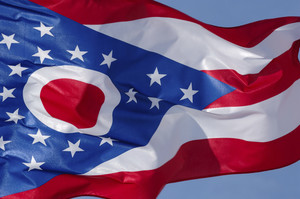[ad_1]

On Tuesday, the Ohio Supreme Court struck down a state statute that prohibited public-sector labor unions and their members from encouraging targeted picketing at the homes of public officials, stating that the law was an unconstitutional content-based restriction on free speech. The decision was unanimous as to the result, but the Justices were divided 4-3 in their reasoning.
The dispute arose five years ago when the Portage County Board of Developmental Disabilities (the “Board”) and the Portage County Educators Association for Developmental Disabilities (the “Association”) reached an impasse during the negotiations of their collective bargaining agreement. Shortly after the Association filed a notice of intent to strike in October 2017, Association members began picketing. While Association members remained on public streets and sidewalks at all times, their picketing took place outside the homes of six Board members and outside of the workplace of one Board member. In response, the Board filed seven unfair-labor-practice charges with the State Employment Relations Board (“SERB”), alleging that the targeting picketing violated R.C. 4117.11(B)(7).
R.C. 4117.11(B)(7) prohibits public sector labor unions and public employees from “[i]nduc[ing] or encourage[ing] any individual in connection with a labor relations dispute to picket the residence or any place of private employment of any public official or representative of the public employer.” In its decision, SERB sided with the Board and ordered the Association to cease and desist from encouraging targeting picketing at Board members’ residences on the basis that R.C. 4117.11(B)(7) prohibited such conduct. The Association appealed, and after several rounds of decisions, the issue came before the Ohio Supreme Court.
As the Appellants, SERB and the Board argued that R.C. 4117.11(B)(7) did not unconstitutionally restrain protected speech, but that it merely placed reasonable “time, place, and manner” restrictions on the speech, which courts have generally allowed when the restrictions do not regulate the content or the subject matter of the expressive activity. The Association maintained that the statute did regulate the content of the protected speech, pointing out that the text of R.C. 4117.11(B)(7) defined content of the expressive activity—i.e., a “labor relations dispute”—and that its restrictions only applied to unions and their members (not to employers). This, the Association argued, made the statute an impermissible “content-based” restriction on protected speech which should fail the “strict scrutiny” review required in such circumstances. In its decision, the Supreme Court was unanimous that R.C. 4117.11(B)(7) was a content-based restraint on free speech that failed strict scrutiny review. Justice Donnelly authored the majority opinion, which was joined by O’Connor, Steward, and Brunner. Justice Kennedy wrote separately (and was joined by Justices Fischer and DeWine) to note that the statute does not expressly prohibit picketing itself, but that it prohibits “encouraging” or “inducing” others to picket in specific locations—residences and places of private employment. Despite this distinction, the Court’s ruling is clear that R.C. 4117.11(B)(7) no longer prohibits public-sector unions from encouraging peaceful picketing on public streets and sidewalks, even if those streets and sidewalks are close to the homes or workplaces of public officials.
[ad_2]




